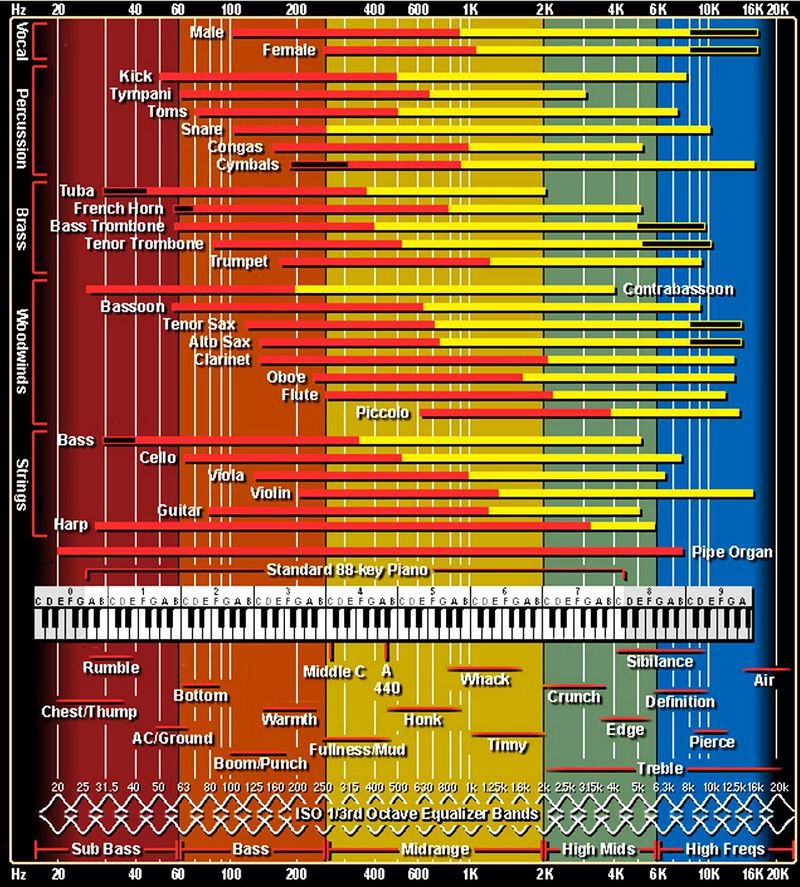This is the wiki for products made by Fractal Audio Systems, maintained by members of the community.
Difference between revisions of "Describing sound"
Jump to navigation
Jump to search
m (edited for readability) |
|||
| (13 intermediate revisions by 2 users not shown) | |||
| Line 1: | Line 1: | ||
When communicating, a common nomenclature for describing sound can be beneficial. It ensures we're all talking about the same thing. When you say <q>honk</q> and I say <q>honk</q>: if we're not both talking about the frequencies that occur between 400 and 1000 Hz on the audio spectrum, we're going to have a hard time communicating. | When communicating, a common nomenclature for describing sound can be beneficial. It ensures we're all talking about the same thing. When you say <q>honk</q> and I say <q>honk</q>: if we're not both talking about the frequencies that occur between 400 and 1000 Hz on the audio spectrum, we're going to have a hard time communicating. | ||
| − | + | Below are charts of standard audio terms, used with permission from [https://www.soundonsound.com Sound On Sound]. The graphic is also available in .PDF format: [https://www.soundonsound.com/sound-advice/sos-audio-frequency-chart PDF]. | |
| + | |||
| + | |||
| + | [[image:Frequency_chart_SOSUK-Nov2012-hires.png|900px|Used with permission from [https://www.soundonsound.com Sound On Sound.]]] | ||
| + | |||
| + | |||
| + | Another chart: | ||
[[File:EQChart.jpg|800px]] | [[File:EQChart.jpg|800px]] | ||
| − | |||
| − | + | See <q>[[EQ#More information|More information]]</q> on the EQ page and watch these videos: | |
[[video:Wampler-DescribeGuitartone]] | [[video:Wampler-DescribeGuitartone]] | ||
| Line 16: | Line 21: | ||
[[category:FM3]] | [[category:FM3]] | ||
[[category:FM9]] | [[category:FM9]] | ||
| + | [[category:VP4]] | ||
[[category:AX8]] | [[category:AX8]] | ||
[[category:FX8]] | [[category:FX8]] | ||
[[category:Sounds]] | [[category:Sounds]] | ||
[[category:All]] | [[category:All]] | ||
Latest revision as of 11:06, 20 August 2025
When communicating, a common nomenclature for describing sound can be beneficial. It ensures we're all talking about the same thing. When you say honk
and I say honk
: if we're not both talking about the frequencies that occur between 400 and 1000 Hz on the audio spectrum, we're going to have a hard time communicating.
Below are charts of standard audio terms, used with permission from Sound On Sound. The graphic is also available in .PDF format: PDF.
Another chart:
See More information
on the EQ page and watch these videos:

